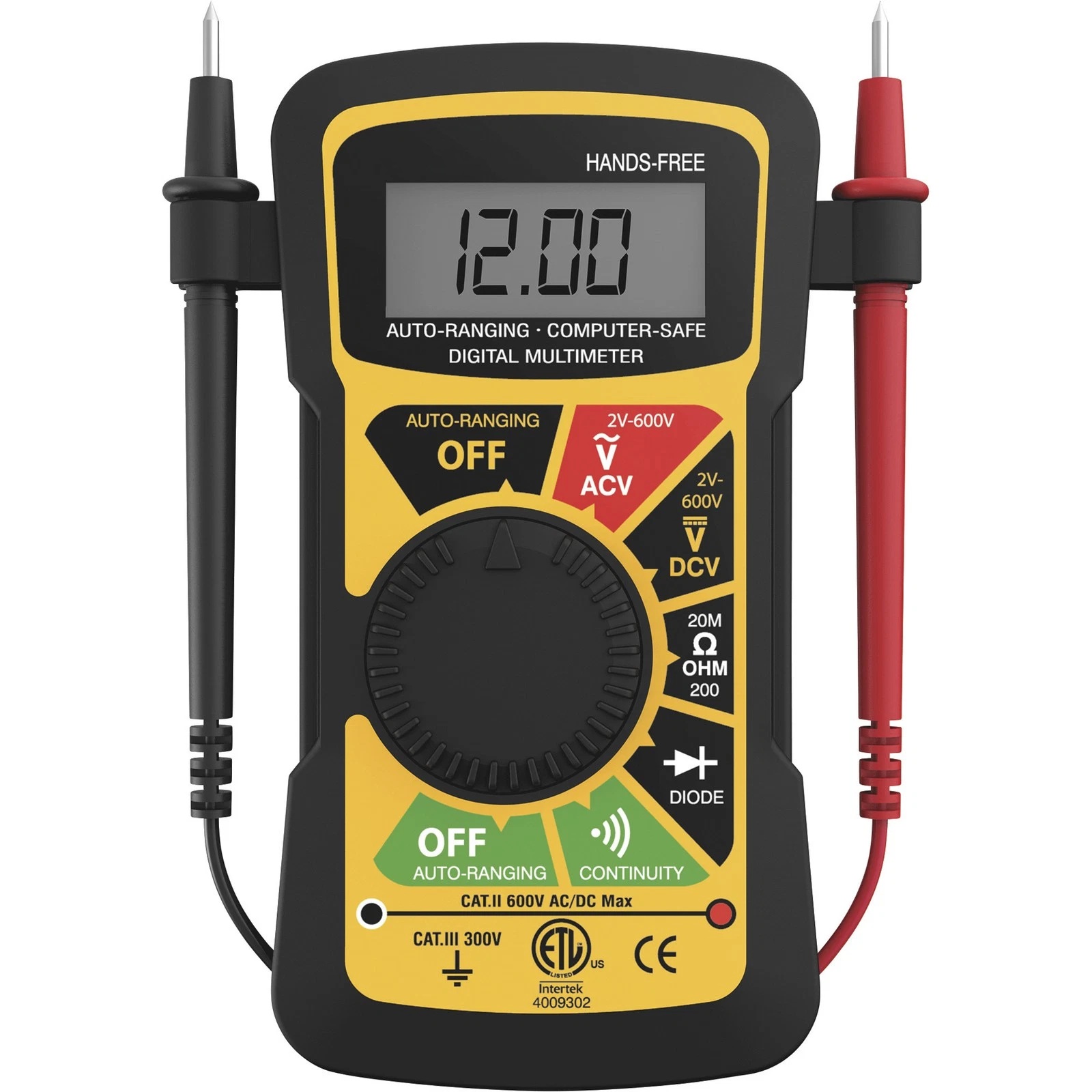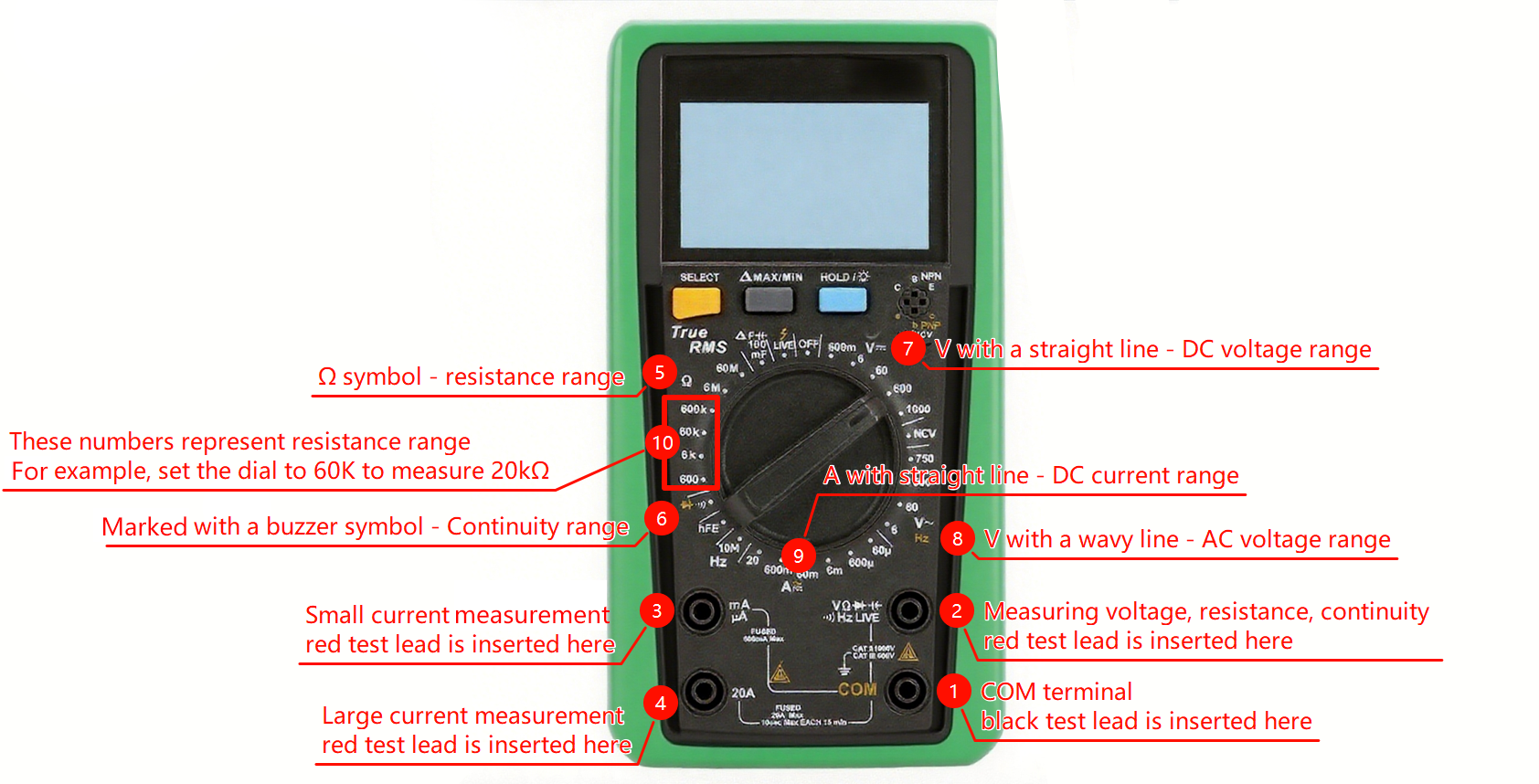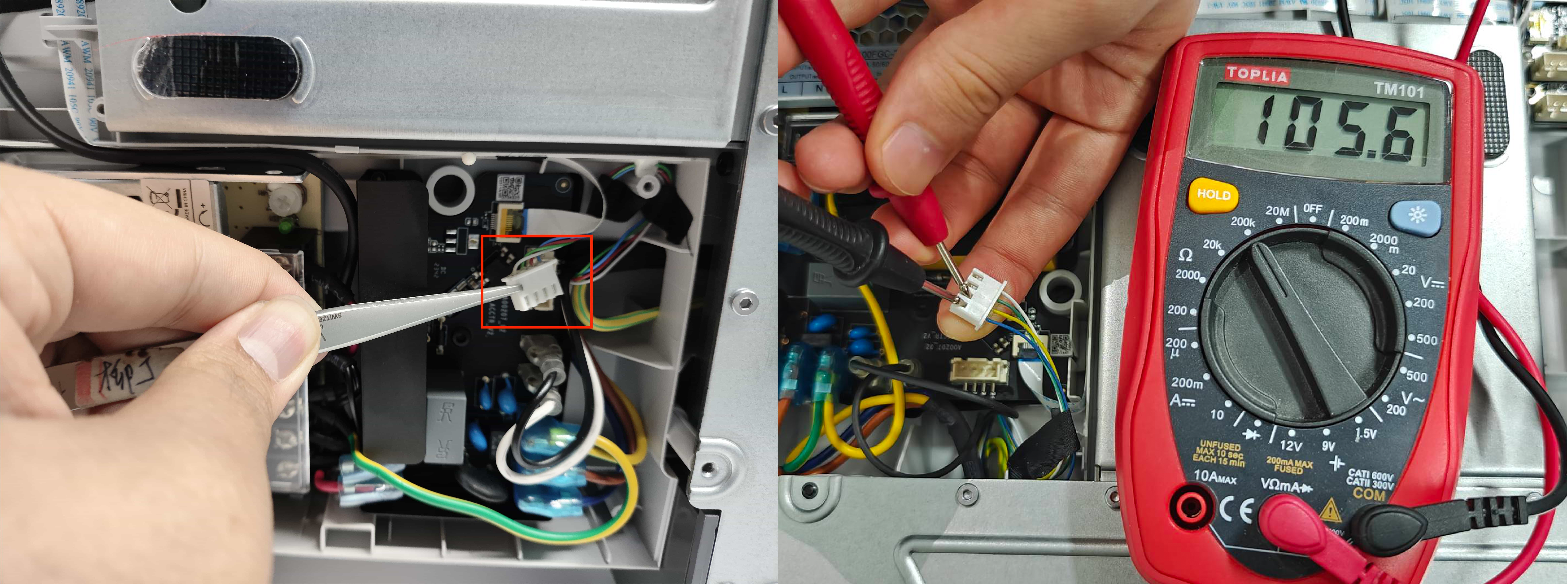¶ What is this?
This is a method of using a multimeter to check whether a circuit is functioning properly.
With a multimeter, we can measure resistance or check circuit continuity to determine whether a component is damaged or if the circuit is open.
¶ Why am I doing it?
When troubleshooting AMS or printer-related issues, a multimeter is often needed to measure resistance values.
This helps determine whether the circuit is continuous and whether components are functioning correctly, allowing you to quickly locate the problem.
With simple measurements, you can identify common issues such as open circuits, cold solder joints, or blown fuses, avoiding unnecessary part replacements.
¶ What do I need for this?
- Multimeter (a digital multimeter with continuity buzzer function is recommended)
- Test leads (black lead inserted into the “COM” port, red lead into the “VΩ” port)
¶ Introduction to the Multimeter
A multimeter is a common testing tool used to measure voltage, current, and resistance.
In troubleshooting, we mainly use the resistance mode (Ω) or continuity mode:
- Resistance mode (Ω): Used to measure the resistance value of components.
- Continuity mode: Used to check whether a circuit is continuous. If continuous, the meter will emit a “beep.”
Multimeters can be divided into manual range multimeters and auto range multimeters:
- Auto Range Multimeter
An auto range multimeter automatically selects the appropriate measurement range based on the object being tested. You only need to set the dial to resistance (Ω) or continuity mode, without manual adjustment.

- Manual Range Multimeter
A manual range multimeter requires the user to manually turn the dial and select the appropriate range based on the expected value. In this guide, we will use a manual range multimeter as an example.

Safety Requirements
- Always disconnect power before measuring to avoid shock or damage.
- Insert the black lead into “COM” and the red lead into “VΩ” to prevent mistakes.
- Hold only the insulated parts of the probes and never touch live circuits.
- On manual meters, start with the highest range and step down to avoid overload.
- Ensure test leads and the multimeter are intact and properly insulated.
¶ Checking Continuity
¶ Case 1: Multimeter with continuity mode
- Place the red and black test leads on both ends of the component (e.g., a fuse).
- If the circuit is continuous: the multimeter will beep and display a value close to 0Ω.
- If the circuit is not continuous: no sound will be heard, and the screen will display “OL” (open loop).
¶ Case 2: Multimeter without continuity mode (only resistance mode available)
- Place the red and black test leads on both ends of the component.
- If the circuit is continuous: the screen will display a resistance value close to 0Ω.
- If the circuit is not continuous: the screen will display “OL” or a very large value (indicating open circuit).
¶ Measuring Resistance (Ω mode)
- If you need to check whether a component’s resistance is normal, turn the dial to the appropriate resistance range.
- Place the test leads on both ends of the component, read the displayed value, and compare it with the component’s rated resistance.
- If the measured value deviates significantly, the component may be damaged.
Tip: How to Choose the Range?
If you don’t know the expected resistance, start with the highest range and work your way down until you get a clear reading.
¶ What Can This Be Used For?
⚠️ Note for Customers
This procedure is intended only for customers who already own a multimeter. It is not required for warranty service and should not be considered a mandatory troubleshooting step.
¶ Case 1:Measure the resistance of the A1 heatbed power supply cable to determine whether the heatbed assembly and its heating cable are functioning properly.
If the measured resistance falls within 45 Ω to 50 Ω (the example shows 47.5 Ω), it indicates that the heatbed assembly and its heating cable are functioning properly.

¶ Case 2:Measure the A1 heatbed NTC and its temperature-sensing cable to check if they are functioning properly.
If the measured resistance is around 100 kΩ (the value may vary slightly with ambient temperature, which is normal; example shows 105.6 kΩ), it indicates that the heatbed NTC and its temperature-sensing cable are functioning properly.
 >
>
¶ End Notes
We hope that the detailed guide we shared with you was helpful and informative.
We want to ensure that you can perform it safely and effectively. If you have any concerns or questions regarding the process described in this article, we encourage you to reach out to our friendly customer service team before starting the operation. Our team is always ready to help you and answer any questions you may have.
Click here to open a new ticket in our Support Page.
We will do our best to respond promptly and provide you with the assistance you need.